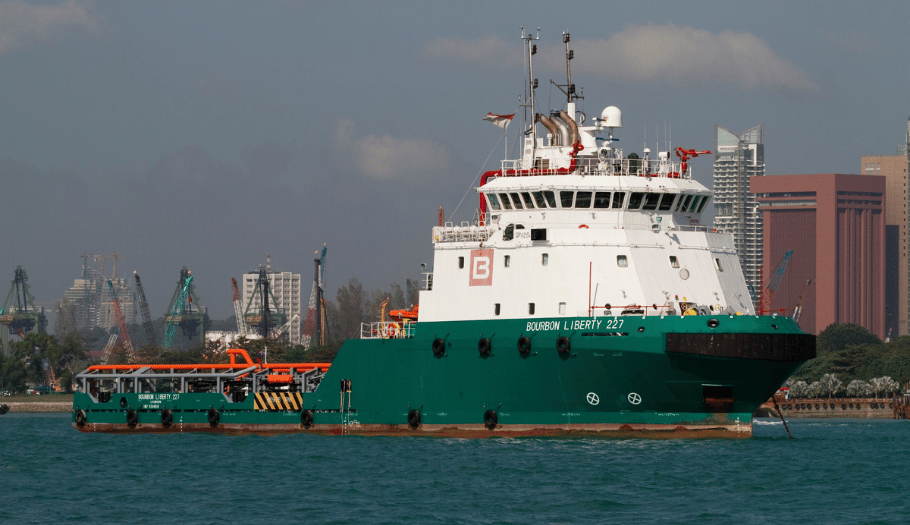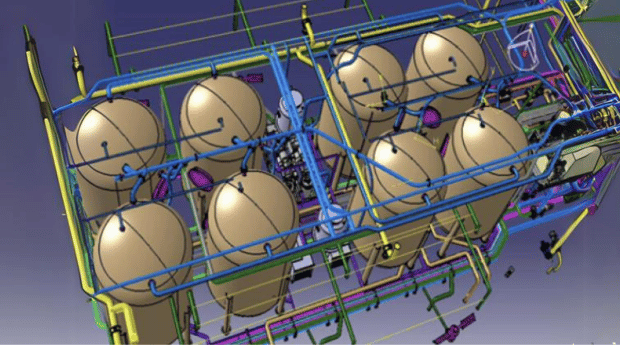Offshore Support Vessels – P-Tank System




About the P-Tank System
A pneumatic bulk handling system is a sophisticated technology designed for the efficient transport of dry bulk materials. It operates on the principle of using air pressure differentials to convey, load, and unload a wide range of materials, including cement, minerals, grains, and chemicals.
This system consists of a network of pipes, valves, compressors, and filters that work in harmony to create controlled airflows. Materials are drawn into the system through vacuum pressure or pushed by compressed air, depending on the application. The materials then travel through pipelines to their intended destination, whether it’s loading them onto a vessel or unloading them at a storage facility.
One of the primary advantages of pneumatic bulk handling systems is their ability to transport materials with minimal physical contact, reducing the risk of contamination or damage. This is particularly crucial for sensitive or hazardous materials. Moreover, these systems are highly versatile, capable of conveying materials over long distances, up inclines, and even around corners.
In industries such as agriculture, construction, and manufacturing, pneumatic bulk handling systems play a pivotal role in streamlining operations, enhancing safety, and ensuring the efficient movement of essential bulk materials. Their adaptability and precision make them a cornerstone of modern material handling and logistics processes.
Oil & Gas
Cement plays a crucial role in the oil and gas industry, primarily in well construction and integrity. This sector relies on cement to ensure the stability and safety of wells in various stages of their lifecycle.
The oil and gas industry demands specific types of cement formulations with precise properties to withstand high-temperature and high-pressure conditions commonly encountered in downhole environments. Cement technology continues to advance, ensuring the industry can maintain the integrity of wells and minimize environmental risks throughout their lifecycle.
By understanding the intricacies of this industry and combining it with our expertise in material handling, we ensure that operations remain seamless, safe, and efficient at all stages.

Operations – Offshore Support Vessels
1. Primary Well Construction
Cement is used to secure the steel casing within the wellbore, preventing any potential leakage of oil, gas, or formation fluids into the surrounding environment. It creates a robust barrier between the wellbore and geological formations.
2. Cementing Operations
During drilling, cement slurries are pumped into the wellbore through the casing. This process, known as cementing, helps to maintain well integrity, isolate zones, and provide support for the casing.
3. Zonal Isolation
Cement isolates different zones within the well, preventing cross-flow between reservoirs and ensuring that production from one zone doesn’t affect another. This is especially critical in unconventional drilling operations.
4. Well Abandonment
In well abandonment or plugging and abandonment (P&A) operations, cement is used to permanently seal the wellbore, preventing any potential environmental contamination and ensuring the safe retirement of the well.
5. Well Remediation
Cement is also employed in well remediation efforts, such as repairing damaged casing or addressing leaks, to restore wellbore integrity.
We have over 60+ years experience
Curious about the innovative pneumatics behind our systems? Dive deeper into how we can revolutionize your operations. Don't hesitate to get in touch for a comprehensive discussion.

